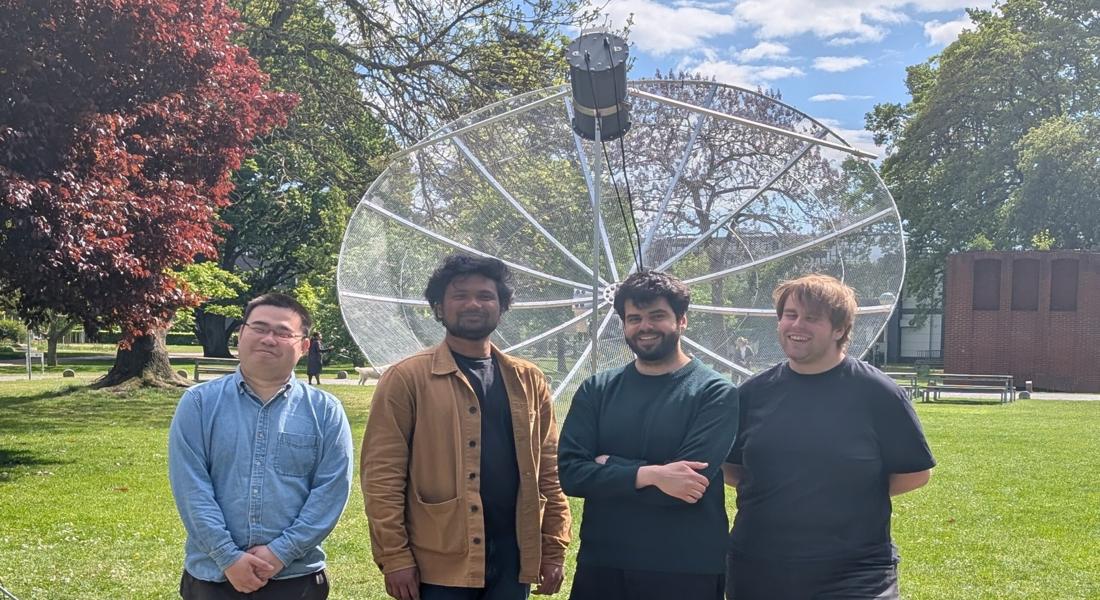First light from student-built radio telescope
Two new student-built telescopes will be mounted on the roof of the Niels Bohr Building to be used for student projects in the future.

Six months and 100 kDKK (€13,4000) is what it took academic employee at the Cosmic Dawn Center, Gaurav Senthil Kumar, and DAWN master students Jiazhe Li, Kaj Arne Grimstrup, and Omar Ahmad Rashdan to construct two 1.9 meter radio telescopes from scratch. One of these had its first light just last week, while the second is soon underway.
"Each of the two dishes are paired with a high-gain orthogonal dipole receiver, something which is quite unique in our design," says Gaurav Kumar, himself a former master student at DAWN and leader of the project. "The receiver is tuned to 21 cm, which is the wavelength of light emitted from atomic hydrogen."
With this setup, the team was able to observe neutral hydrogen in the Milky Way from the institute's backyard. When the second dish is ready, the two dishes will be combined to form a 7 meter baseline interferometer, i.e. reaching the same resolution as a single 7 meter dish (two degrees, corresponding roughly to the area covered by two fingers held out at an arm's length).
Milky Way's arms and dark matter
Dubbed the "Niels Bohr Interferometric Teaching Telescope" (NBITT), the two telescopes will be mounted on the top of the Niels Bohr Building, where they will be used by future students to make density maps of the Milky Way, galaxy rotation curves, show the existence of dark matter, and more.
Together with an 18 cm optical telescope, they will form Denmark's first combined optical/radio observatory, as well as Denmark's first teaching interferometer.
"The most difficult part of the process was — and still is — to calibrate the instrument such we not only detect a signal, but actually know exactly how much flux we detect," explains Gaurav Kumar. "If we achieve this we can measure how much neutral hydrogen the Milky Way's spiral arms contain."
The project is funded by the Dr. N. P. Wieth-Knudsens Observatory Foundation.
